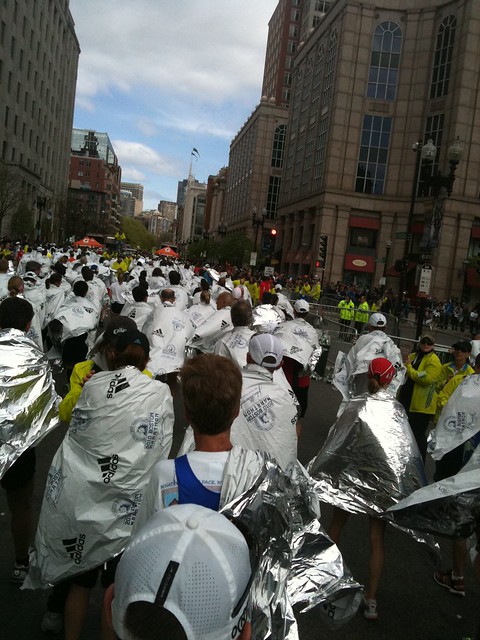Our sport is portrayed in the oddest light in mainstream media. On one end, you get the bizarre (pregnant marathoners, web cam runners), while on the other, you'll get the clinical coverage of the top end of the sport focused on the key stars. Other coverage tries to chart the movement of this running boom, deciding to give lifestyle-tinged coverage of how to get fit and cross another line on your bucket list.
Even within our own press, such magazines as Runner's World and Canadian Running Magazine, struggles with how to connect to this community. We'll see great features of our running royalty, of the top 10 ways to (lose weight/eat healthy/run long), and a few feel-good profiles of fellow runners who do great things. Occasionally, Runner's World hits it out of the park with top notch narratives that's worth the year's subscription.
Fielding accusations from the general readership on how MSM operates, I often wonder if it's true. Does mainstream miss the mark? Can they tap into issues, topics and feelings that emerge.
 |
| The masses |
I watched the Kony 2012 video take grip this past week. At my newsroom, we flooded to 'figure out' what the buzz was all about, and we jumped on it. Other national newsrooms started doing the same. A day after that, it appeared on the national news station. And by the weekend, a national newspaper dedicated its front page to explaining what makes a video (or a movement) go viral. A front page newspaper article about viral video? That circular motion reminded me of those first days that media figured out that real people were using Twitter and found the only way to respond is to cover the platform to death. Huh?
I've written about how Twitter is great for running, but it occurred to me how out of touch one can get. A few weeks ago, I read a piece by Canadian Running about How Social Media is Changing Our Stride. The reporter, who had interviewed me a year ago, wrote about the closeness of community that social had brought to our sport.
My post on the Scotiabank marathon bag check disaster got mention (self plug alert):
At the grassroots level, there are recreational runners, ranting to others with similar passions - an angry blog post about poor race organization can get dozens of comments, generating compelling discussions and responses from race directors. The Scotiabank Toronto Waterfront Marathon’s baggage claim disaster received significant coverage on Kenny Yum’s blog “A whole lot of soles.” Race director Alan Brookes even took notice, sending out an apology and incorporating suggestions from the blog into his proposed solution for the next year.
Looking back at the bag check disaster, I remember thinking about that disconnect. I had just finished one of Canada's biggest marathons, and there was, to our community, a massive screwup. I looked for coverage but there was nothing, even from our own running press, no mention on their sites or social. All eyes were on the elites, the record breakers, the 'highlight' reel.
The resulting post provide what I saw as the only outlet of coverage that clearly connected with a lot of my fellow runners. I posted, curated from Tweets and other social channels, conversed on social to get more reaction.
To my fellow media colleagues, I'm sure it was an interesting exercise to witness. Even as I was putting the post together I had several thoughts about MSM conspiracies. Did the running press feel a lack of responsibility to shed light on a race's miscues that could also sub as an advertiser or did it just have its eyes too much on the front of the pack to figure out what the rest of the racers (essentially, its readership) were experiencing? Do the elite press only pay attention to the elite? I wonder about that even now when I look at Canadian Running, who on Twitter describes itself as "the voice of Canada's running community, designed to inspire and motivate runners of all abilities." What do runners care about?
As a recreational runner, and one that's on various social networks (including DailyMile), and one that has maintained a running blog for plus six years, it's interesting to see that daily conversation as they unfold inthe blogosphere, on social media and on the running trails. I get a daily dose when I look through my site's stats to see what people are searching for. They're looking for advice on how to run the next race, how to train for that half marathon, on how to run through sickness, or tackle the hills of the 30K Around the Bay. I've learned that listening to that search traffic, conversing on social, reading other blogs gives me a truer picture of what this running community is like. Sometimes if I'm lucky i'll also see it reflected in the running press as well.
No comments:
Post a Comment